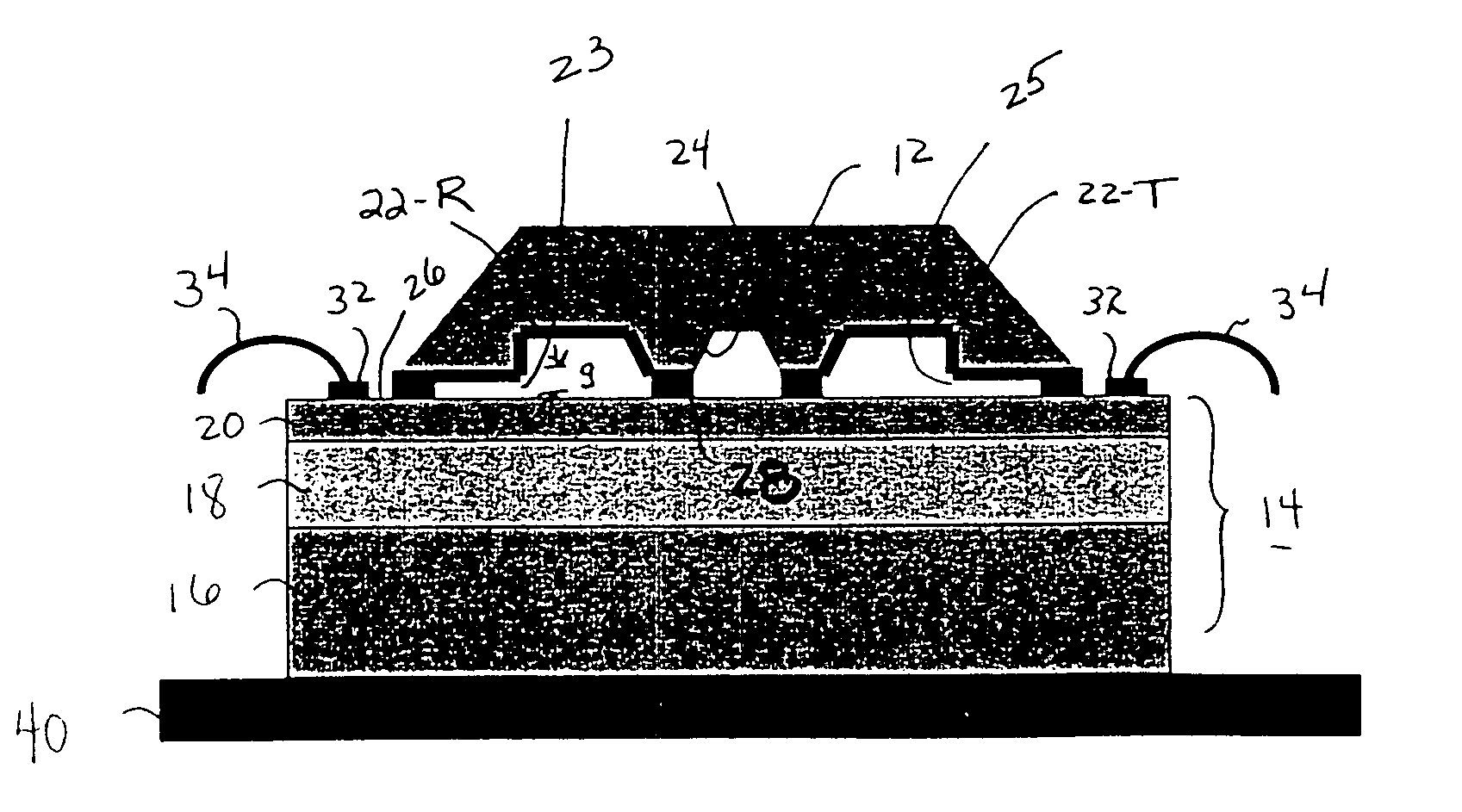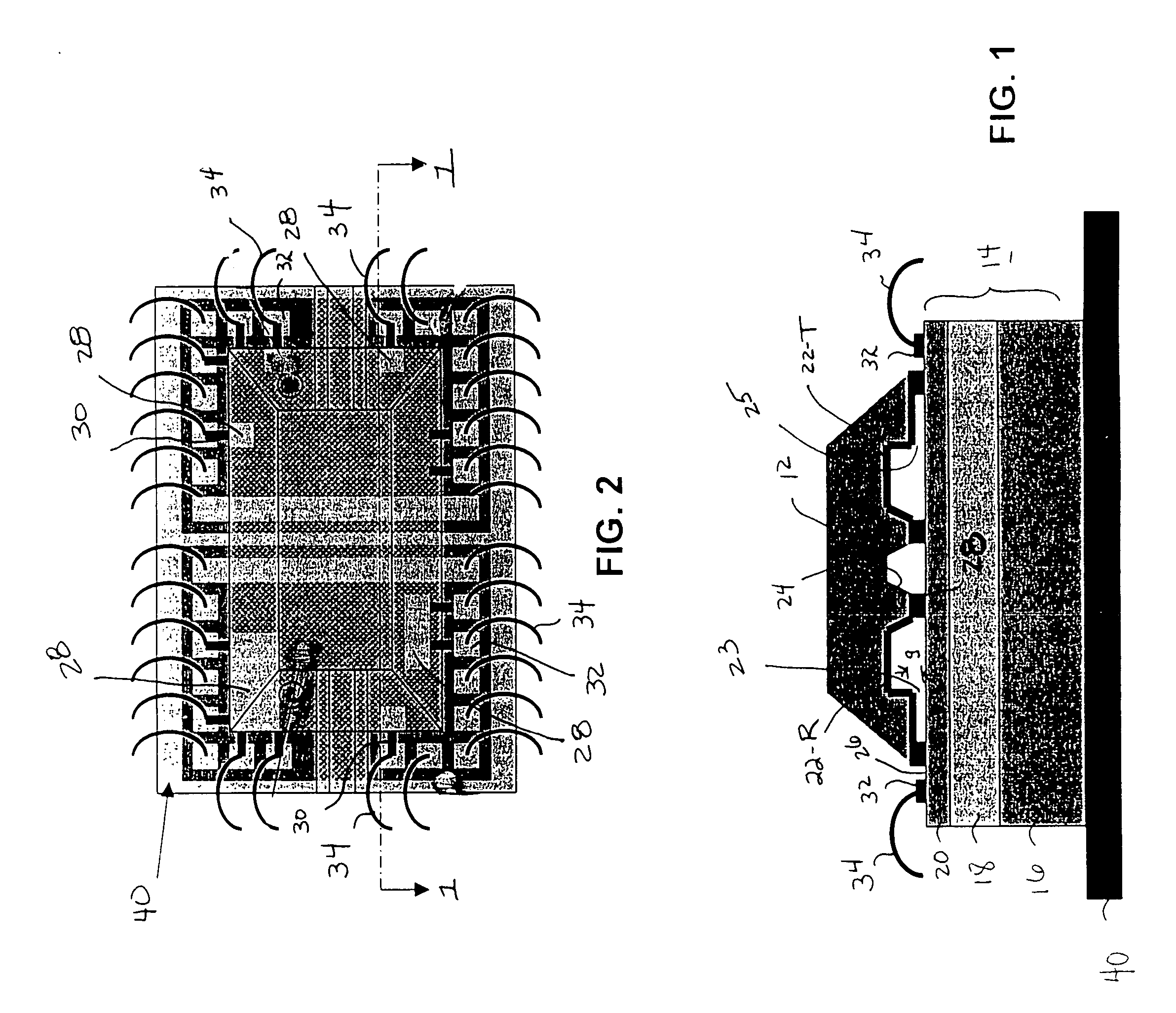EMI-EMC shield for silicon-based optical transceiver
a technology of optoelectronic circuits and shields, applied in the direction of optical elements, instruments, optical waveguide light guides, etc., can solve the problems of affecting affecting the sensitivity of the transceiver, and the size of the circuit board and components, so as to improve the operation of the transceiver, improve the shielding effect, and improve the sensitivity
- Summary
- Abstract
- Description
- Claims
- Application Information
AI Technical Summary
Benefits of technology
Problems solved by technology
Method used
Image
Examples
Embodiment Construction
[0025] In order to simultaneously achieve an EMI / EMC shield and optical coupling for a silicon-based opto-electronic integrated circuit formed within an SOI structure, a very low electrical impedance arrangement at electro-magnetic frequencies is required. The interface for the optical coupling also needs to be tightly controlled in order to provide the requisite evanescent coupling between a free space optical beam coupler and the SOI structure. As discussed above, the EMI / EMC shield needs to be such that, for example, an electronic transmitter circuit is significantly electro-magnetically isolated from electronic receiver circuitry (and vice versa). Additionally, the structure needs to electro-magnetically isolate the opto-electronic circuits from external, unwanted EMI radiation sources. It is to be noted that the structural requirements for EMI shielding and EMC shielding are essentially equivalent and will be treated as such for the purposes of the present invention. The EMC sh...
PUM
 Login to View More
Login to View More Abstract
Description
Claims
Application Information
 Login to View More
Login to View More - R&D
- Intellectual Property
- Life Sciences
- Materials
- Tech Scout
- Unparalleled Data Quality
- Higher Quality Content
- 60% Fewer Hallucinations
Browse by: Latest US Patents, China's latest patents, Technical Efficacy Thesaurus, Application Domain, Technology Topic, Popular Technical Reports.
© 2025 PatSnap. All rights reserved.Legal|Privacy policy|Modern Slavery Act Transparency Statement|Sitemap|About US| Contact US: help@patsnap.com



